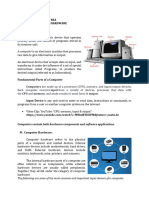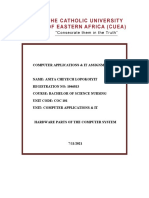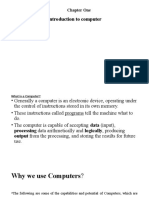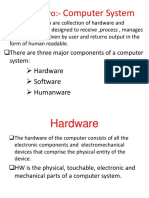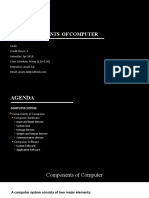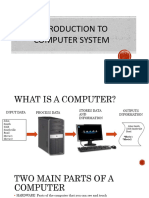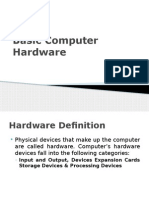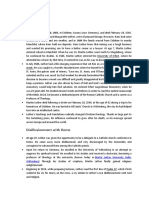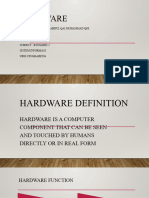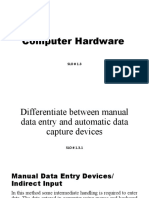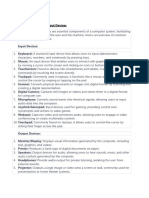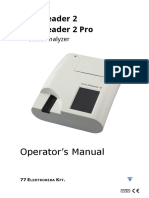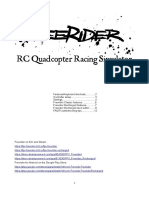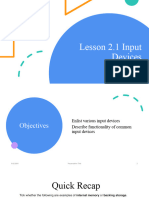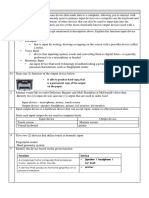0% found this document useful (0 votes)
243 views4 pagesComputer Components Overview
The document discusses the main components of a computer system, including the motherboard, central processing unit (CPU), memory and storage, input devices, and output devices. The motherboard connects and supports all other components. The CPU performs data processing and controls the system. Memory temporarily stores data for processing while storage saves data long-term. Common input devices are keyboards, mice, scanners, microphones, and webcams. Output devices display and present the results of processing, like monitors, printers, speakers, and projectors.
Uploaded by
AirishDiazCopyright
© © All Rights Reserved
We take content rights seriously. If you suspect this is your content, claim it here.
Available Formats
Download as DOCX, PDF, TXT or read online on Scribd
0% found this document useful (0 votes)
243 views4 pagesComputer Components Overview
The document discusses the main components of a computer system, including the motherboard, central processing unit (CPU), memory and storage, input devices, and output devices. The motherboard connects and supports all other components. The CPU performs data processing and controls the system. Memory temporarily stores data for processing while storage saves data long-term. Common input devices are keyboards, mice, scanners, microphones, and webcams. Output devices display and present the results of processing, like monitors, printers, speakers, and projectors.
Uploaded by
AirishDiazCopyright
© © All Rights Reserved
We take content rights seriously. If you suspect this is your content, claim it here.
Available Formats
Download as DOCX, PDF, TXT or read online on Scribd
/ 4



















